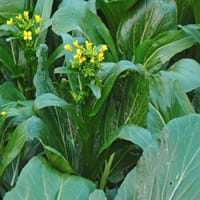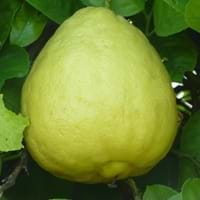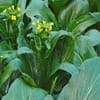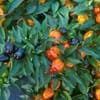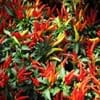Life Span
Annual
Perennial
Origin
Europe
Hybrid origin, Asia
Types
Not Available
Not Available
Number of Varieties
Not Available
Habitat
agricultural areas, Moist Soils
Lawn
USDA Hardiness Zone
4-10
11-12
Sunset Zone
A1, A2, A3, H1, H2, 1a, 1b, 2a, 2b, 3a, 3b, 4, 5, 6, 7, 8, 9, 10, 11, 12, 13, 14, 15, 16, 17, 18, 19, 20, 21, 22, 23, 24
H1, H2, 8, 9, 12, 13, 14, 15, 16, 17, 18, 19, 20, 21, 22, 23, 24
Habit
Upright/Erect
Oval or Rounded
Flower Color
Yellow
White, Red, Purple
Flower Color Modifier
Bicolor
Bicolor
Fruit Color
Sienna, Black
Yellow, Yellow green
Leaf Color in Spring
Green, Light Green
Dark Green
Leaf Color in Summer
White, Green, Dark Green
Dark Green
Leaf Color in Fall
White, Green, Dark Green
Dark Green
Leaf Color in Winter
White, Green, Dark Green
Light Green
Plant Season
Spring, Fall, Winter
Spring, Summer, Fall, Winter
Sunlight
Full Sun, Partial Sun
Full Sun, Partial Sun
Type of Soil
Clay, Loam, Sand
Loam, Sand
The pH of Soil
Acidic, Neutral
Acidic, Neutral
Soil Drainage
Well drained
Well drained
Bloom Time
Spring, Summer
Indeterminate
Tolerances
Drought
Drought
Where to Plant?
Container, Ground
Ground, Pot
How to Plant?
Seedlings
Cuttings, Grafting, Seedlings
Plant Maintenance
Medium
Medium
Watering Requirements
Allow to dry out slightly between watering, Do not water the foliage, Keep the Soil well drained
Reduce watering in winter, Water frequently while growing
In Summer
Lots of watering
Lots of watering
In Spring
Moderate
Moderate
In Winter
Average Water
Average Water
Soil pH
Acidic, Neutral
Acidic, Neutral
Soil Type
Clay, Loam, Sand
Loam, Sand
Soil Drainage Capacity
Well drained
Well drained
Sun Exposure
Full Sun, Partial Sun
Full Sun, Partial Sun
Pruning
Remove dead or diseased plant parts
Remove damaged leaves, Remove dead branches, Remove dead leaves
Fertilizers
8-8-8, since leafy plants, use higher nitrogen content fertilizer
All-Purpose Liquid Fertilizer
Pests and Diseases
Aphids, Beetles, Cabbage looper, Downy mildew, Fusarium leaf spot, Rust
Leafminer
Plant Tolerance
Full Sun, Humidity, Shallow soil
Drought
Flower Petal Number
Single
Single
Fragrant Bark/Stem
No
Yes
Foliage Texture
Medium
Medium
Foliage Sheen
Not Available
Glossy
Attracts
Caterpillar, Mites
Not Available
Allergy
Diarrhea, Dizziness, Nausea
Anaphylaxis, Oral Allergy
Aesthetic Uses
Not Available
Bonsai
Beauty Benefits
Anti-ageing, Hair Conditioner, Skin cleanser
Not Available
Environmental Uses
Fixes Nitrogen, Food for animals
Air purification
Medicinal Uses
Aging, Anti-oxidant, Digestion problems, Eliminate toxins, Nutritive, Obesity, Rich in Potassium
Astringent, Diuretic, Febrifuge
Part of Plant Used
Leaf Stalks, Leaves
Fruits, Pulp, Tree trunks
Other Uses
Culinary use, Sauces, Used to promote healthy blood flow during menstruation
Cosmetics, Disinfectant, Edible syrup
Used As Indoor Plant
No
Yes
Used As Outdoor Plant
Yes
Yes
Garden Design
Container, Edible, Herb / Vegetable, Wildflower
Container, Edible, Fruit / Fruit Tree, Houseplant, Topiary / Bonsai / Espalier, Tropical
Botanical Name
BRASSICA rapa( Chinensis Group)
CITRUS limon 'Ponderosa'
Common Name
Bok Choy, Chinese Cabbage, Choy Sum, Pak Choi
Lemon, Ponderosa Lemon
In Hindi
choy sum
Ponderosa Lemon
In German
choy sum
Ponderosa Zitrone
In French
choy sum
Citron Ponderosa
In Spanish
choy sum
Ponderosa Lemon
In Greek
choy sum
Ponderosa Lemon
In Portuguese
choy sum
Ponderosa Lemon
In Polish
choy sum
Ponderosa Lemon
In Latin
choy sum
Ponderosa Lemon
Phylum
Magnoliophyta
Not Available
Class
Magnoliopsida
Magnoliopsida
Order
Capparales
Sapindales
Family
Brassicaceae
Rutaceae
Clade
Angiosperms, Monocots
Angiosperms, Eudicots, Rosids
Tribe
Not Available
Citreae
Subfamily
Not Available
Aurantioideae
Importance of Choy Sum and Ponderosa Lemon
Want to have the most appropriate plant for your garden? You might want to know the importance of Choy Sum and Ponderosa Lemon. Basically, these two plants vary in many aspects. Compare Choy Sum and Ponderosa Lemon as they differ in many characteristics such as their life, care, benefits, facts, etc. Every gardener must at least have the slightest clue about the plants he wants to plant in his garden. Compare their benefits, which differ in many ways like facts and uses. The medicinal use of Choy Sum is Aging, Anti-oxidant, Digestion problems, Eliminate toxins, Nutritive, Obesity and Rich in Potassium whereas of Ponderosa Lemon is Astringent, Diuretic and Febrifuge. Choy Sum has beauty benefits as follows: Anti-ageing, Hair Conditioner and Skin cleanser while Ponderosa Lemon has beauty benefits as follows: Anti-ageing, Hair Conditioner and Skin cleanser.
Compare Facts of Choy Sum vs Ponderosa Lemon
How to choose the best garden plant for your garden depending upon its facts? Here garden plant comparison will help you to solve this query. Compare the facts of Choy Sum vs Ponderosa Lemon and know which one to choose. As garden plants have benefits and other uses, allergy is also a major drawback of plants for some people. Allergic reactions of Choy Sum are Diarrhea, Dizziness and Nausea whereas of Ponderosa Lemon have Anaphylaxis and Oral Allergy respectively. Having a fruit bearing plant in your garden can be a plus point of your garden. Choy Sum has no showy fruits and Ponderosa Lemon has showy fruits. Also Choy Sum is not flowering and Ponderosa Lemon is not flowering . You can compare Choy Sum and Ponderosa Lemon facts and facts of other plants too.
